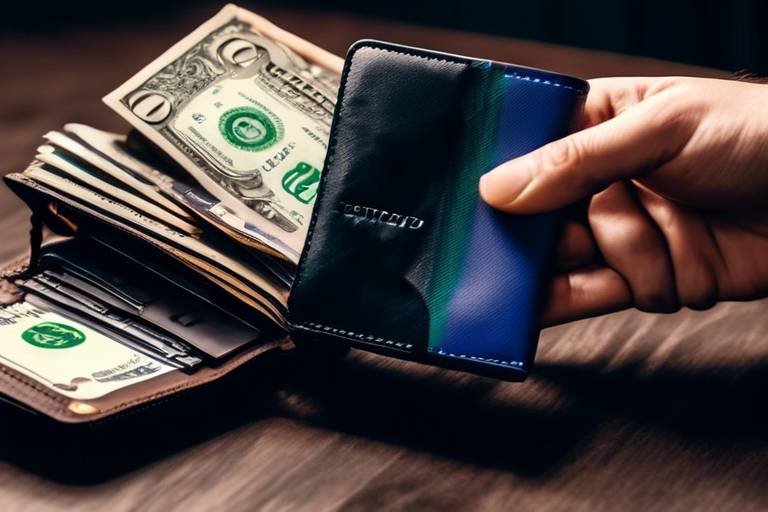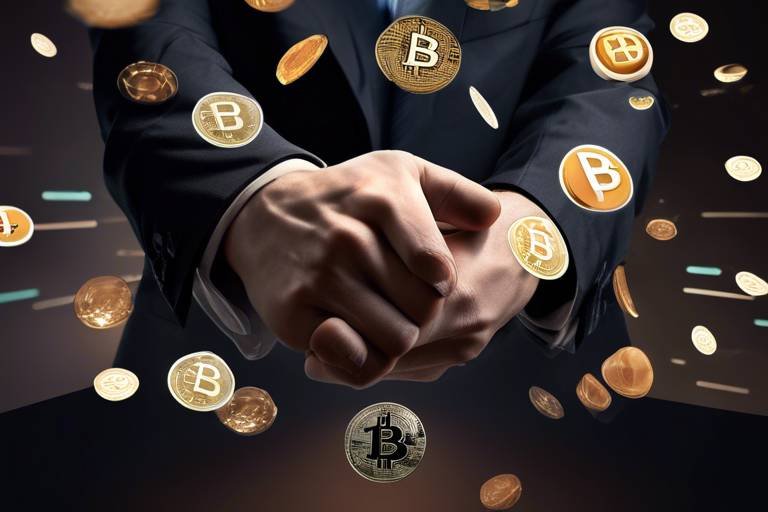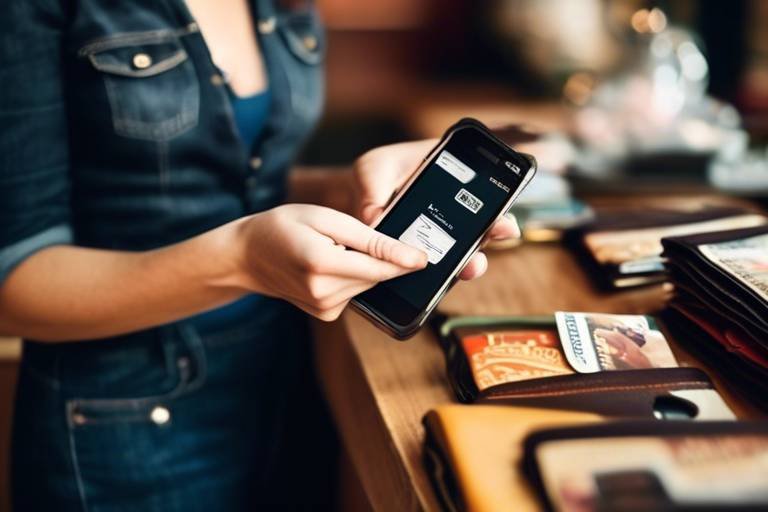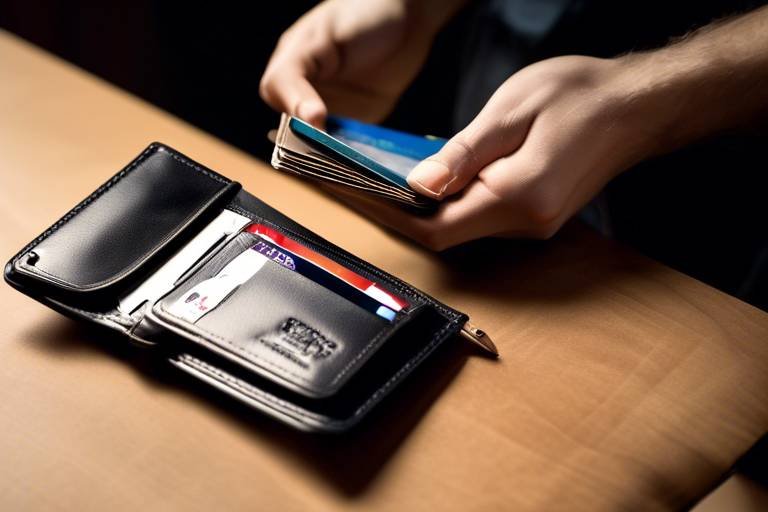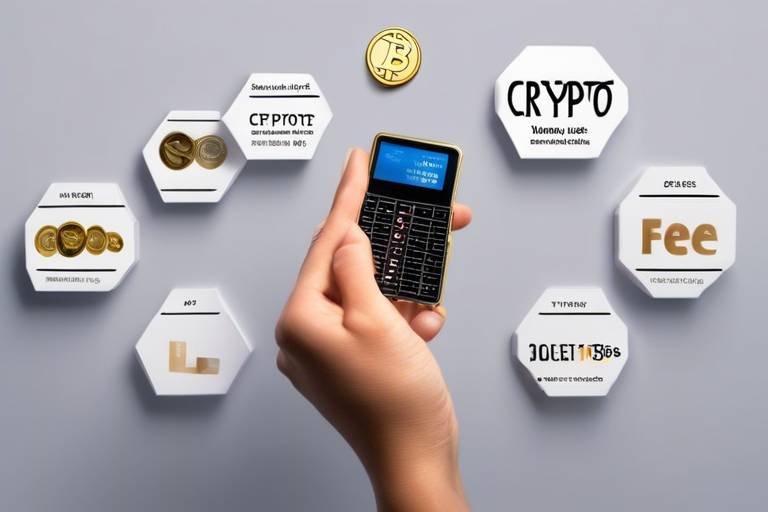How to Use Wallets for Buying Digital Goods and Services
In today's fast-paced digital world, the way we purchase goods and services has drastically changed. Gone are the days when you had to dig through your wallet for cash or cards. Now, with the rise of digital wallets, buying digital goods is not only easier but also more secure. Whether you're looking to buy music, e-books, or even online courses, understanding how to use these wallets effectively can transform your shopping experience.
At its core, a digital wallet is an application or device that allows you to store payment information and passwords for various payment methods. Think of it as a virtual version of your physical wallet, but much more convenient! With just a few taps on your smartphone or clicks on your computer, you can make purchases without the hassle of entering your card details every single time. Digital wallets not only streamline transactions but also enhance security, making online shopping a breeze.
There are several types of digital wallets available, each designed to cater to different needs and preferences. Here’s a quick rundown:
- Mobile Wallets: These are apps on your smartphone, like Apple Pay or Google Wallet, that let you make purchases directly from your device.
- Web Wallets: Accessible through your browser, web wallets like PayPal allow you to buy goods online without needing to enter credit card information.
- Cryptocurrency Wallets: For those diving into the world of crypto, these wallets store your digital currencies securely.
Each type has unique features, so it’s essential to choose one that fits your lifestyle.
Ready to dive in? Setting up your digital wallet is a straightforward process. First, you need to select a wallet provider that suits your needs. After that, download the app or visit the website to create an account. This usually involves providing some personal information and verifying your identity. Once your account is set up, you’ll need to link your payment methods, such as credit cards or bank accounts, to ensure seamless transactions. It’s like prepping your toolbox before starting a DIY project—everything needs to be in place for smooth execution!
In the realm of online shopping, security is paramount. Digital wallets come equipped with various security features designed to protect your financial information. Here are a few key features to look out for:
- Encryption: This technology scrambles your data, making it unreadable to unauthorized users.
- Two-Factor Authentication: This adds an extra layer of protection by requiring a second form of verification before accessing your account.
- Biometric Login: Many wallets now support fingerprint or facial recognition, ensuring that only you can access your funds.
Understanding these features can help you feel more confident when making purchases online.
Most digital wallets allow you to link multiple payment methods, which can be a game-changer for managing your finances. You can easily switch between credit cards or bank accounts depending on your needs. It’s crucial to know how to manage these links effectively to ensure that your transactions are both efficient and secure. Remember, keeping your payment methods organized is like keeping your closet tidy—it saves you time and hassle!
Using a digital wallet to purchase digital goods is typically a straightforward process. After selecting the item you want to buy, you simply choose your wallet at the checkout. With just a few clicks, you confirm the transaction, and voilà! Your purchase is complete. This process is not only fast but also user-friendly, making online shopping an enjoyable experience.
The advantages of using digital wallets are numerous. For starters, they offer unparalleled convenience. You can make purchases anytime, anywhere, without the need for physical cash or cards. Additionally, digital wallets are incredibly fast, allowing you to complete transactions in a matter of seconds. Lastly, enhanced security features help protect your sensitive information, making digital wallets a safe choice for online shopping.
While digital wallets are generally reliable, users might occasionally encounter issues such as payment failures or account lockouts. Knowing how to troubleshoot these problems can significantly enhance your overall experience. Here are some common solutions:
- Check your internet connection if a payment fails.
- Ensure your payment methods are up to date.
- Contact customer support for assistance with account lockouts.
Being prepared for these situations can save you time and frustration.
Q: Are digital wallets safe to use?
A: Yes, digital wallets come with various security features like encryption and two-factor authentication to protect your information.
Q: Can I link multiple payment methods to my digital wallet?
A: Absolutely! Most digital wallets allow you to link multiple credit cards and bank accounts for easier transactions.
Q: What should I do if my payment fails?
A: Check your internet connection, ensure your payment method is valid, and try again. If the issue persists, contact customer support.
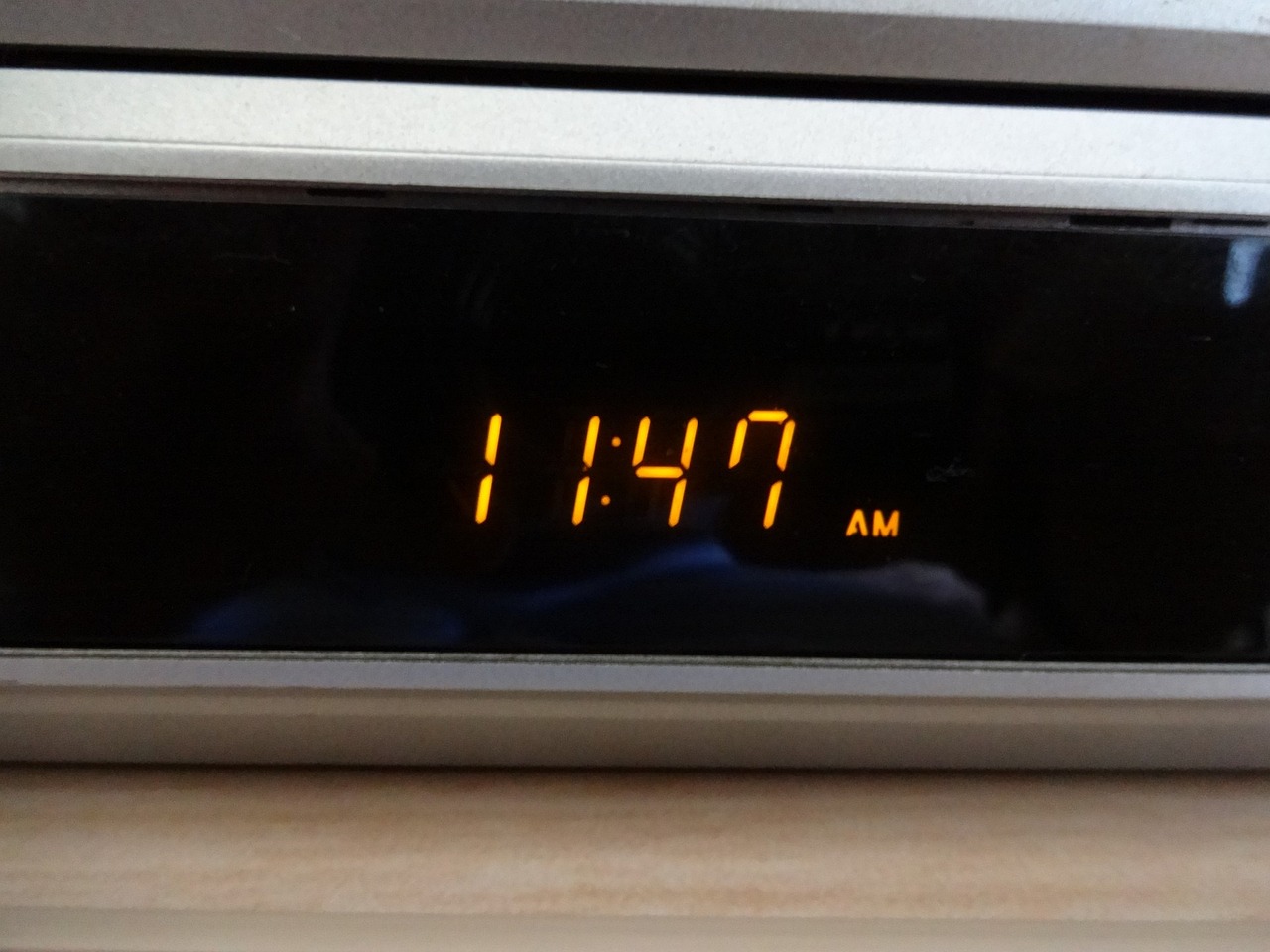
Understanding Digital Wallets
Digital wallets, often referred to as e-wallets, are becoming an essential tool in our increasingly cashless society. Imagine having all your payment information—credit cards, bank accounts, and even loyalty cards—conveniently stored in one secure place, accessible right from your smartphone or computer. That's the power of digital wallets! They are applications or devices designed to store your payment information and passwords for various payment methods, streamlining the online shopping experience. With just a few taps or clicks, you can make purchases for digital goods and services without the hassle of entering your payment details each time.
One of the most significant advantages of using digital wallets is the enhanced security they offer. Unlike traditional payment methods, where sensitive information can be exposed, digital wallets utilize advanced encryption technology to protect your data. This means that when you make a purchase, your actual credit card number is not shared with the merchant. Instead, a unique token is generated for each transaction, adding an extra layer of security. Furthermore, digital wallets often incorporate features like two-factor authentication and biometric login, such as fingerprint recognition or facial recognition, ensuring that only you can access your financial information.
Digital wallets are not just about security; they also provide unparalleled convenience. Picture this: you're in a rush, and you need to buy a digital subscription or download a new app. Instead of fumbling around for your wallet or typing in your card details, you simply open your digital wallet, select your preferred payment method, and voila! The transaction is completed in seconds. This speed and ease of use make digital wallets a favorite among consumers who value efficiency in their shopping experiences.
Moreover, digital wallets are versatile and can be used for a variety of transactions, not just for buying digital goods. They can facilitate payments for services, online shopping, and even peer-to-peer money transfers. Here’s a quick overview of the types of transactions you can perform with digital wallets:
- Online Purchases: Buy digital goods like e-books, music, and software.
- Subscription Services: Pay for streaming services, apps, and memberships.
- In-Store Payments: Use your wallet to pay at physical retail locations.
- Peer-to-Peer Transfers: Send money to friends and family quickly.
In conclusion, understanding digital wallets is crucial in today’s digital age. They not only simplify the purchasing process but also enhance security and offer convenience that traditional payment methods simply can't match. As we continue to embrace technology in our daily lives, digital wallets will undoubtedly play a significant role in shaping how we handle our finances and make purchases online.
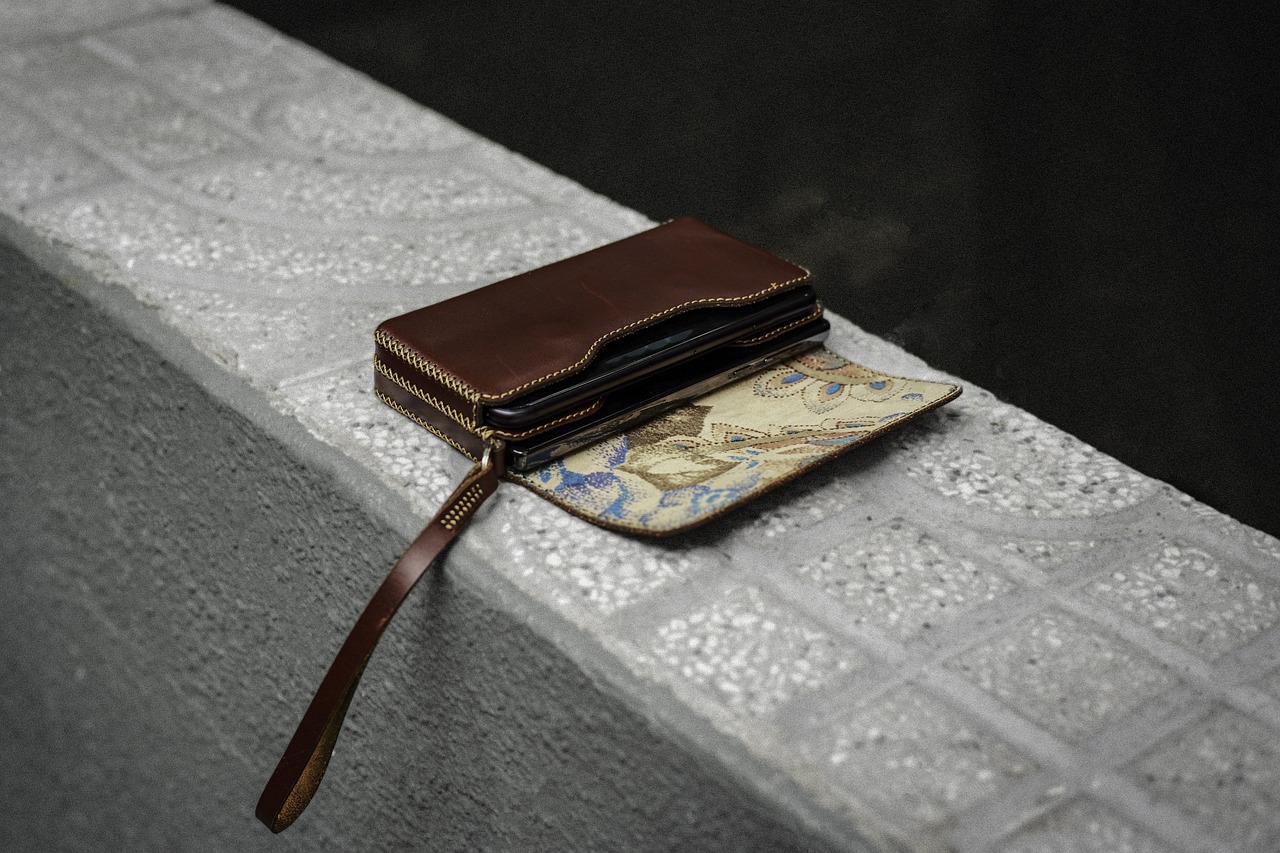
Types of Digital Wallets
When diving into the world of digital wallets, it's essential to recognize that there are several types tailored to fit different needs and preferences. Each type has its own unique features that make it suitable for various purchasing scenarios, especially when it comes to buying digital goods and services. Understanding these types can significantly enhance your online shopping experience. Let's explore the main categories of digital wallets:
1. Mobile Wallets: These are perhaps the most popular type of digital wallet today. Mobile wallets, such as Apple Pay, Google Pay, and Samsung Pay, allow users to store their payment information directly on their smartphones. With just a few taps, you can make purchases in-store or online. Imagine walking into a store, and instead of fumbling for cash or cards, you simply wave your phone at the terminal. It’s that easy!
2. Web Wallets: Web wallets are accessible through your browser and are typically offered by online payment platforms like PayPal, Skrill, and Venmo. They allow users to manage their funds and make purchases without needing to enter card details each time. This type of wallet is incredibly convenient for online shopping since it securely stores your payment information, making transactions smoother and faster. Think of it as your personal online shopping assistant, ready to help you check out with minimal effort.
3. Cryptocurrency Wallets: As digital currencies like Bitcoin and Ethereum gain popularity, cryptocurrency wallets have emerged as a crucial tool for enthusiasts and investors alike. These wallets come in various forms, including hardware wallets, software wallets, and online wallets. Hardware wallets, such as Ledger and Trezor, provide a secure way to store your cryptocurrencies offline, while software wallets allow for easier access and transactions. If you’re looking to dip your toes into the world of digital currencies, understanding how these wallets work is vital.
4. Closed Wallets: Closed wallets are typically associated with specific merchants or platforms. For instance, gaming platforms like Steam or app stores like Google Play have their own closed wallets where you can store credits or funds. These wallets are limited to purchases within their respective ecosystems. Think of it as a gift card that can only be used at a specific store, making it a great option for frequent shoppers of a particular brand.
5. Open Wallets: In contrast to closed wallets, open wallets can be used across various merchants and platforms. They offer greater flexibility and are often linked to traditional banking systems. This means you can use them for a wide range of online purchases, from shopping to paying for services. Open wallets are like a universal key, unlocking access to a multitude of online stores and services.
To summarize, the type of digital wallet you choose can significantly impact how you purchase digital goods and services. Each wallet has its unique strengths, so consider your personal preferences and shopping habits when deciding which one to use. Whether you prefer the convenience of a mobile wallet, the security of a cryptocurrency wallet, or the flexibility of an open wallet, there’s an option out there that will suit your needs perfectly.
| Type of Wallet | Key Features | Best For |
|---|---|---|
| Mobile Wallets | Convenient, secure, quick transactions | Everyday purchases, in-store payments |
| Web Wallets | Accessible via browser, stores payment info | Online shopping, easy fund management |
| Cryptocurrency Wallets | Secure storage, various types available | Investors, digital currency transactions |
| Closed Wallets | Merchant-specific, limited usage | Frequent shoppers of specific brands |
| Open Wallets | Flexible, linked to banking systems | Wide range of online purchases |
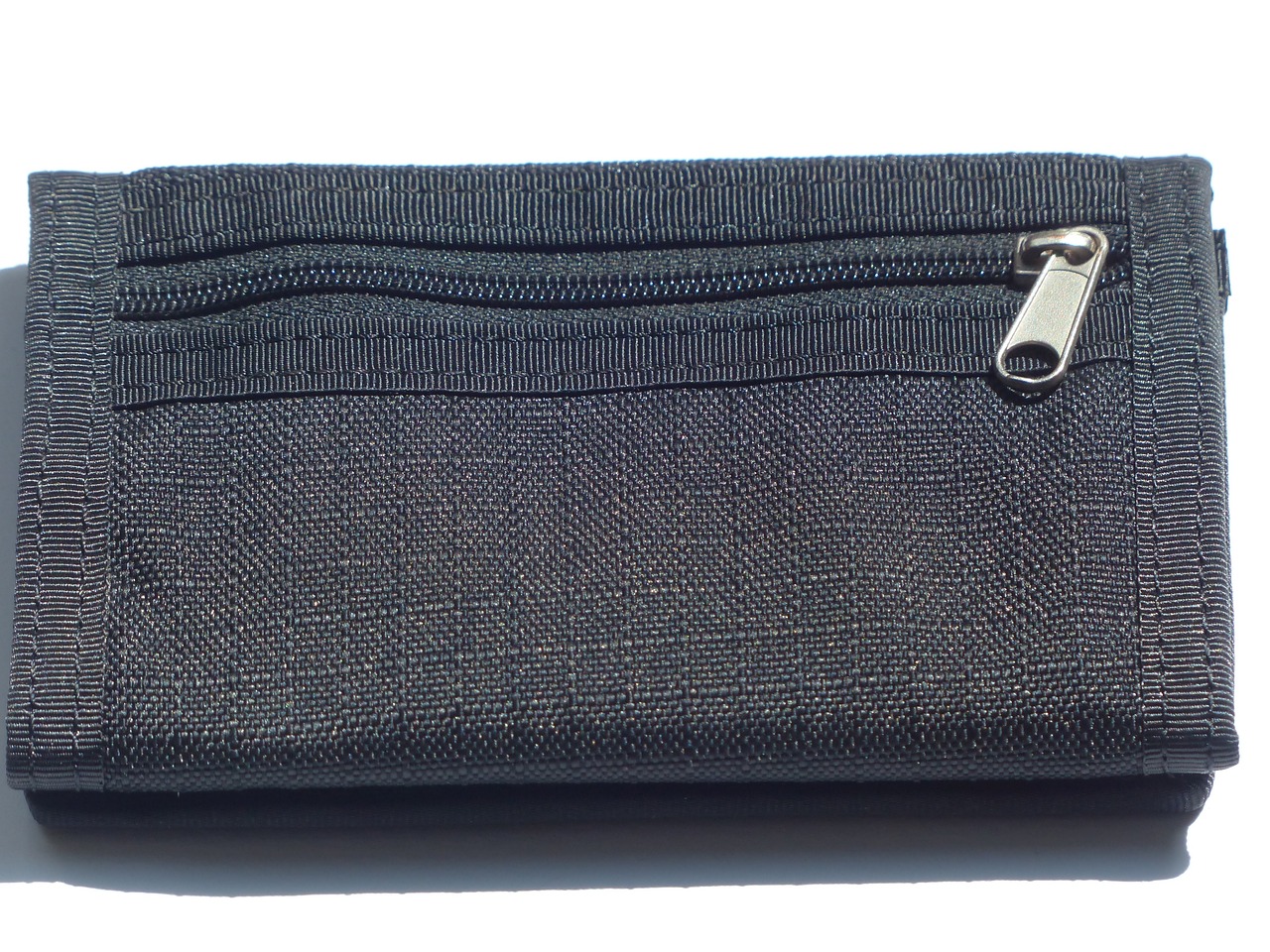
Setting Up Your Digital Wallet
Setting up your digital wallet is the first step towards a seamless online shopping experience. Just like preparing your backpack before a hiking trip, you need to ensure that your digital wallet is ready to carry the weight of your transactions. The process is straightforward and can be completed in just a few minutes. First, you’ll need to choose a wallet provider that suits your needs. There are many options available, including popular choices like PayPal, Apple Pay, Google Wallet, and various cryptocurrency wallets. Each of these providers has its own unique features, so it’s essential to do a little research to find the one that aligns with your purchasing habits.
Once you've selected a provider, the next step is to download the app or access the web interface. Most digital wallets are available on both mobile and desktop platforms, allowing you to choose the method that is most convenient for you. After downloading, you’ll need to create an account. This process typically involves providing some personal information such as your name, email address, and sometimes your phone number for verification purposes. It’s like signing up for a new social media account, but with a focus on financial transactions.
After setting up your account, the crucial step is to link your payment methods. Digital wallets allow you to connect various payment options, including credit cards, debit cards, and bank accounts. This flexibility is one of the main advantages of using a digital wallet. To link your payment methods, you will usually need to enter your card details or bank information, and in some cases, you might have to verify your identity through a two-step authentication process. This might sound like a hassle, but it's a vital security measure to protect your financial information.
Here’s a quick overview of the steps involved in setting up your digital wallet:
| Step | Action |
|---|---|
| 1 | Choose a wallet provider |
| 2 | Download the app or access the web interface |
| 3 | Create an account with your personal information |
| 4 | Link your payment methods (credit/debit cards, bank accounts) |
Once your wallet is set up and your payment methods are linked, you’re ready to start purchasing digital goods and services. It’s important to remember that while the setup process is quick, you should always take the time to review the security settings of your wallet. Enabling features such as two-factor authentication can add an extra layer of protection. Think of it as locking your front door and setting the alarm before leaving your house—it's a small step that can prevent big problems down the line.
Finally, don’t forget to explore the features of your digital wallet. Many wallets offer rewards programs, discounts, or even cashback on purchases. By familiarizing yourself with these features, you can maximize the benefits of using your digital wallet. It’s like discovering hidden treasures in your backyard—there's often more than meets the eye!
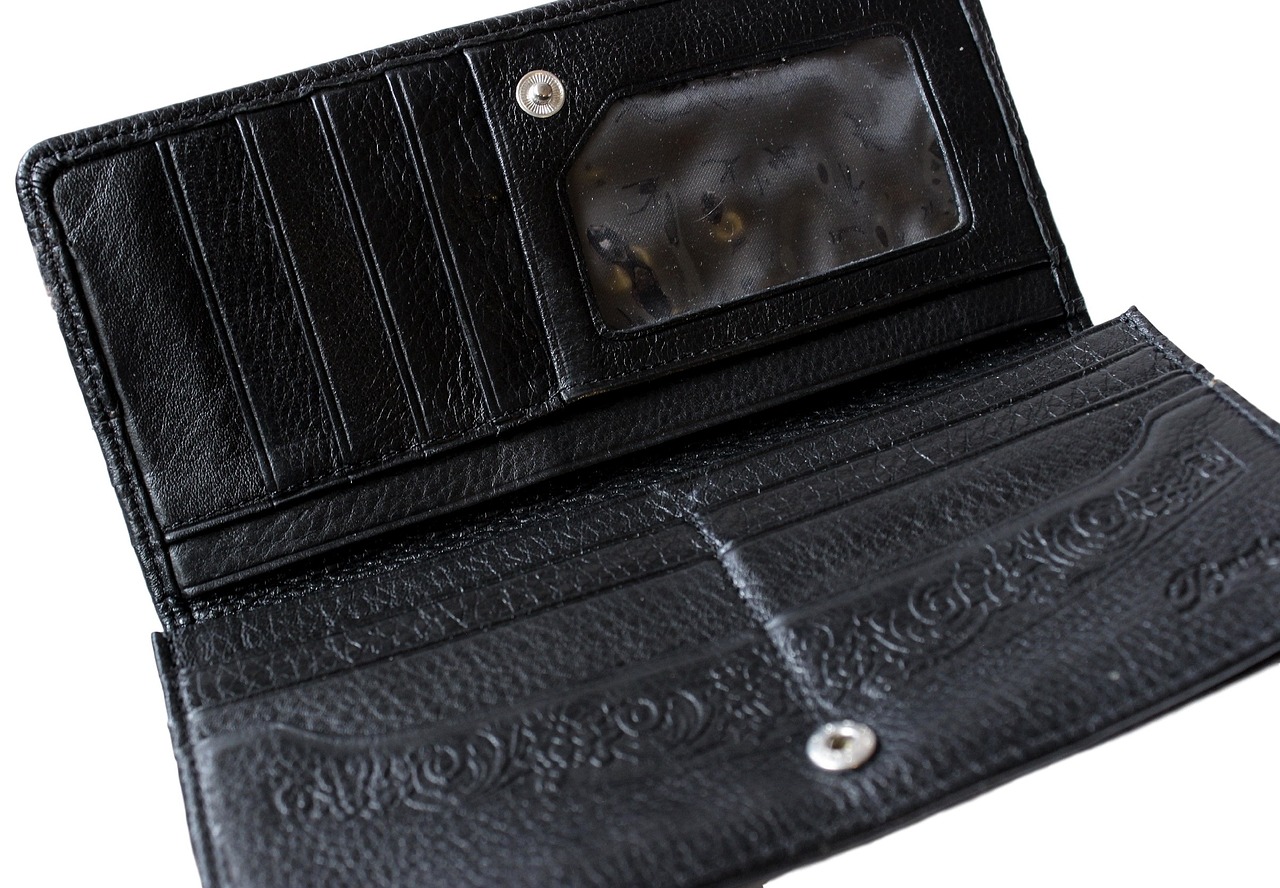
Security Features of Digital Wallets
When it comes to online transactions, security is paramount. Digital wallets have revolutionized the way we shop by providing a secure environment for our financial information. One of the most significant advantages of using a digital wallet is the array of security features designed to protect users. Let’s dive into some of these features that make digital wallets a safe choice for buying digital goods and services.
First and foremost, encryption plays a crucial role in safeguarding your data. When you enter your payment information, it’s encrypted, meaning that it’s transformed into a secure code that is nearly impossible for hackers to decipher. This ensures that even if your data were intercepted, it would be unreadable to unauthorized users.
Another layer of security comes in the form of two-factor authentication (2FA). This feature requires you to provide two forms of identification before you can access your wallet or complete a transaction. For example, after entering your password, you might receive a verification code via SMS. This extra step significantly reduces the risk of unauthorized access, making your wallet much more secure.
Many digital wallets also incorporate biometric login options, such as fingerprint or facial recognition. This means that only you can access your wallet, as it requires your unique biological traits. Imagine trying to break into a vault that only opens with your fingerprint – that’s the level of security biometric login offers!
Additionally, reputable digital wallets provide users with the ability to monitor transactions in real-time. This feature means you can quickly spot any suspicious activity. If you notice something odd, you can take immediate action, such as freezing your account or changing your password. It’s like having a personal security guard watching over your finances 24/7.
Moreover, many wallets offer fraud protection policies that protect you against unauthorized transactions. If someone were to use your wallet without your permission, you could potentially recover your funds. This feature gives users peace of mind, knowing they are not solely responsible for any fraudulent activity that may occur.
In summary, the security features of digital wallets are designed to provide users with a safe and secure way to conduct transactions online. With robust encryption, two-factor authentication, biometric login, real-time transaction monitoring, and fraud protection, digital wallets are equipped to handle the demands of today’s digital economy. By understanding and utilizing these features, you can shop for digital goods with confidence.
- What is a digital wallet? A digital wallet is an application or device that stores your payment information and passwords for various payment methods, allowing for easy and secure online transactions.
- Are digital wallets safe to use? Yes, digital wallets are generally safe due to their advanced security features like encryption, two-factor authentication, and biometric login.
- Can I link multiple payment methods to my digital wallet? Absolutely! Most digital wallets allow you to link various payment methods, including credit cards and bank accounts, for convenience.
- What should I do if I suspect fraud on my digital wallet? If you notice any suspicious activity, immediately freeze your account and change your password. Most wallets also have customer support to assist you with fraud issues.
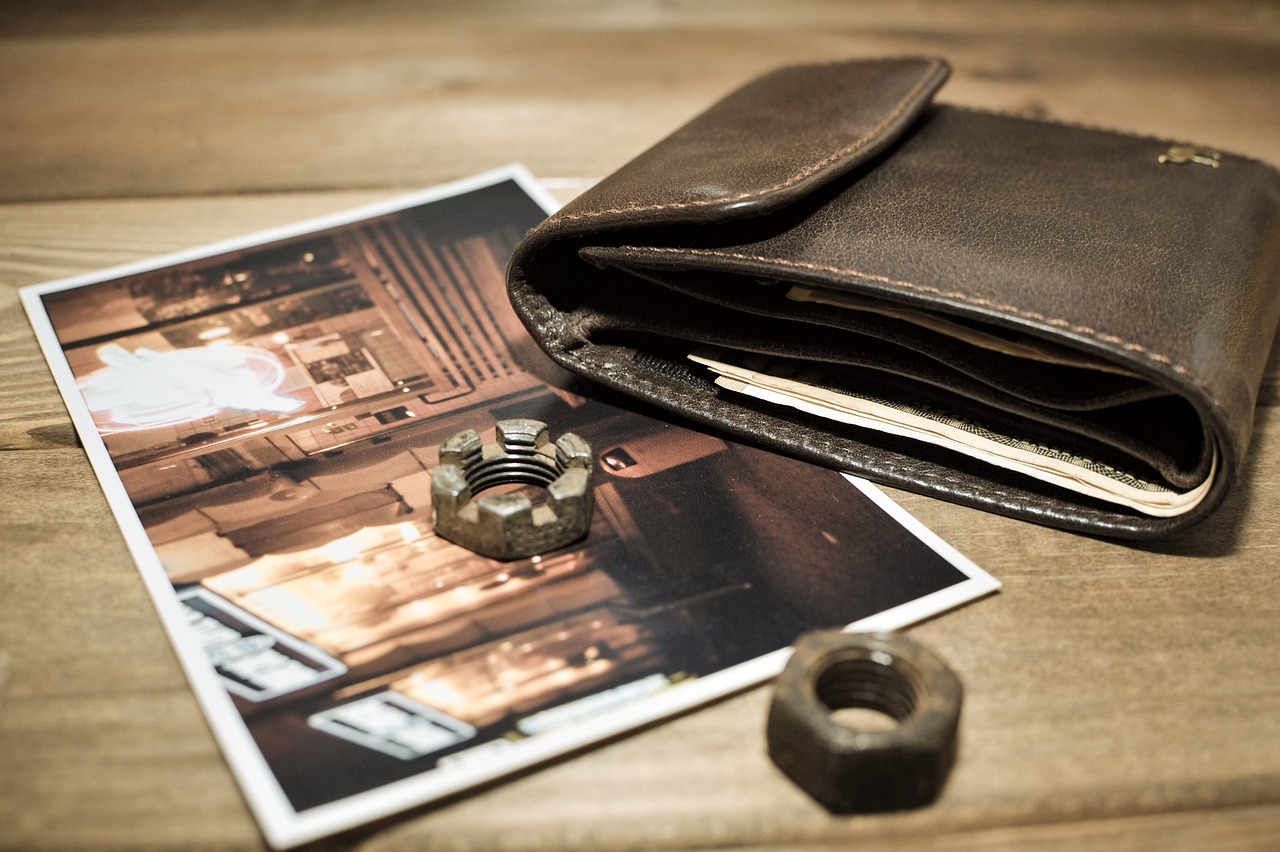
Linking Payment Methods
Linking payment methods to your digital wallet is a crucial step that can significantly enhance your online shopping experience. Imagine having all your payment options at your fingertips, ready to go whenever you need them. This convenience not only saves you time but also adds a layer of flexibility to how you make purchases. So, how do you go about this? Let’s break it down.
First, when you choose a digital wallet, you’ll typically be prompted to add your payment methods right after the initial setup. This can include various options such as credit cards, debit cards, and even bank accounts. The process is usually straightforward: you enter your card details, verify them, and voilà! Your payment method is linked. However, it’s essential to ensure that the information you provide is accurate. A small typo could lead to payment failures, which can be frustrating.
Most digital wallets also allow you to link multiple payment methods, giving you the ability to choose your preferred option at checkout. For instance, you might want to use your credit card for regular purchases but switch to your bank account for larger transactions. This flexibility can be a game changer, especially if you’re managing a budget or trying to maximize rewards points.
When linking your payment methods, keep in mind the following best practices:
- Use secure connections: Always link your payment methods over a secure Wi-Fi network to avoid potential hacking risks.
- Regularly review linked accounts: Periodically check which payment methods are linked to your wallet and remove any that you no longer use.
- Monitor transactions: Keep an eye on your wallet transactions to catch any unauthorized charges quickly.
After linking your payment methods, you can easily manage them within the wallet app. Most wallets provide an intuitive interface where you can edit, remove, or add new payment options. This functionality not only enhances usability but also allows you to stay organized, ensuring that you always have the right payment method ready for your next digital purchase.
In summary, linking payment methods to your digital wallet is a simple yet vital process that can make your online shopping experience much smoother. By following best practices and regularly managing your linked accounts, you can enjoy a seamless and secure purchasing journey. So, are you ready to dive into the world of digital wallets and make your online transactions as easy as pie?
Here are some common questions users have about linking payment methods in digital wallets:
- Can I link multiple credit cards to my digital wallet? Yes, most digital wallets allow you to link multiple credit and debit cards.
- What should I do if my payment method is declined? First, check if the information is entered correctly. If everything looks good, contact your bank or wallet provider for assistance.
- Is it safe to link my bank account to a digital wallet? Yes, as long as you use reputable wallets that offer strong security measures like encryption and two-factor authentication.
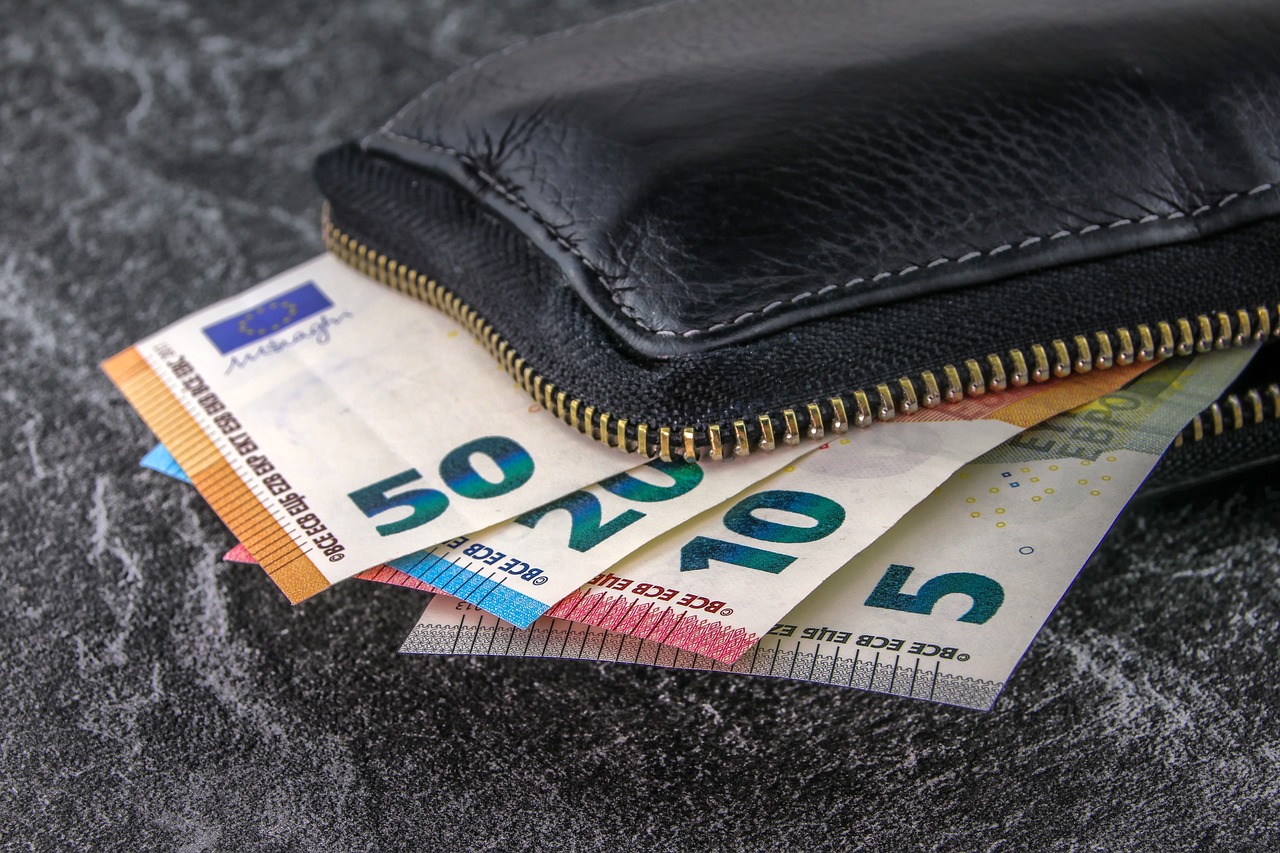
Buying Digital Goods with Wallets
When it comes to buying digital goods, using a digital wallet transforms the experience from mundane to seamless. Imagine you're browsing your favorite online store, and you find that perfect e-book or the latest music album. With just a few taps on your screen, you can complete the purchase without fumbling for your credit card or entering your payment details. It’s like having a magic key that unlocks instant access to a world of digital content!
So, how does this process work? First, you select the digital item you want to buy. This could be anything from software, games, e-tickets, or even subscriptions to streaming services. Once you've made your choice, you proceed to the checkout page. Here’s where the magic happens: instead of manually entering your payment information, you simply choose your digital wallet as the payment method. This not only saves time but also reduces the risk of errors that can occur when typing out card numbers or billing addresses.
After selecting your wallet, you’ll typically be prompted to confirm the transaction. This step is crucial as it ensures that you are aware of the purchase you’re about to complete. Most wallets will display a summary of the transaction, including the total amount, the seller's details, and what you’re buying. It's a bit like double-checking your order at a restaurant before the waiter walks away—better safe than sorry!
Once you confirm the transaction, the magic continues. The payment is processed almost instantly, and you receive a notification confirming your purchase. This immediate feedback is one of the many perks of using a digital wallet. You don’t have to wait around for an email or a confirmation number; everything is handled in real-time, making the whole experience feel smooth and efficient.
Moreover, digital wallets often come with added features that enhance your purchasing experience. For instance, some wallets allow you to store loyalty points or coupons, which can be applied directly at checkout. This means you can not only buy digital goods but also save money while doing so. It’s like having a personal shopper who knows just the right deals for you!
In addition, the security measures that digital wallets employ give users peace of mind. With features like encryption and two-factor authentication, your financial information is protected, making online shopping safer than ever. You can shop confidently, knowing that your sensitive data is shielded from potential threats.
To summarize, buying digital goods with a wallet is not just about convenience; it’s about creating a delightful shopping experience. From the moment you find that item you want to the instant you receive confirmation of your purchase, every step is designed to be easy and secure. So, next time you’re ready to make a digital purchase, consider using a wallet—it might just change the way you shop online!
- What types of digital goods can I buy with a digital wallet?
You can purchase a wide range of digital goods, including software, e-books, music, games, and subscription services. - Are digital wallets safe to use?
Yes, digital wallets are designed with multiple layers of security, including encryption and two-factor authentication, making them safe for transactions. - Can I link multiple payment methods to my digital wallet?
Absolutely! Most digital wallets allow you to link various payment methods, such as bank accounts and credit cards, for flexibility.
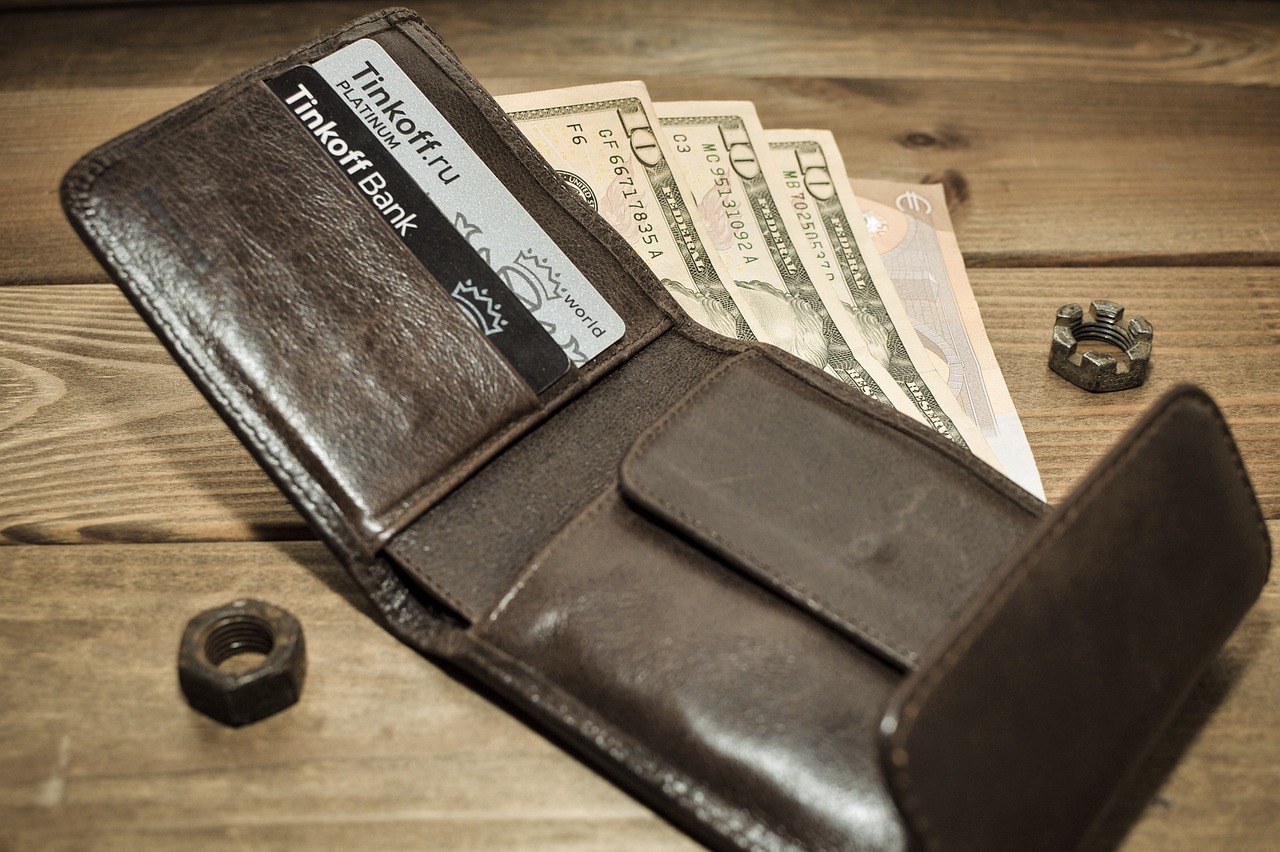
Benefits of Using Digital Wallets
When it comes to online shopping, digital wallets have revolutionized the way we make purchases. Imagine having all your payment methods at your fingertips, ready to go with just a few taps. Digital wallets offer a myriad of benefits that can enhance your shopping experience, making it smoother and more efficient. One of the most significant advantages is convenience. With a digital wallet, you can store multiple payment options—from credit cards to bank accounts—allowing you to switch between them effortlessly without the hassle of entering your details each time.
Another noteworthy benefit is speed. Traditional payment methods often involve tedious steps, from filling out forms to waiting for confirmation. In contrast, digital wallets streamline this process, letting you complete transactions in mere seconds. This is especially beneficial during flash sales or limited-time offers, where every second counts. Additionally, the security features integrated into digital wallets provide peace of mind. With encryption, two-factor authentication, and biometric login options, your sensitive information is safeguarded against potential threats.
Moreover, digital wallets often come with added perks. Many providers offer rewards programs, cash-back incentives, or discounts for using their services. This means that not only are you saving time and reducing stress, but you might also be saving money in the process! For instance, some wallets allow you to earn points that can be redeemed for future purchases, turning your spending into a rewarding experience.
Furthermore, digital wallets facilitate international transactions. If you’ve ever tried to buy something from a foreign website, you know how complicated it can be with currency conversions and payment methods. Digital wallets simplify this by allowing users to transact in their local currency, eliminating the confusion and potential fees associated with currency exchange.
In a world that’s increasingly moving towards a cashless society, embracing digital wallets is not just a trend but a smart choice. They are designed to adapt to your lifestyle, offering features that cater to your specific needs. Whether you’re a frequent online shopper, a traveler, or someone who simply values convenience, digital wallets are your best bet for a seamless purchasing experience.
- What is a digital wallet? A digital wallet is an application or device that stores payment information and passwords for various payment methods, allowing users to make online transactions easily.
- Are digital wallets safe to use? Yes, digital wallets come equipped with security features like encryption and two-factor authentication to protect your financial information.
- Can I link multiple payment methods to my digital wallet? Absolutely! Most digital wallets allow you to link various payment methods, such as credit cards and bank accounts.
- How do I use a digital wallet to buy digital goods? Simply select your item, choose your digital wallet at checkout, and confirm the transaction. It's usually quick and user-friendly!

Common Issues and Troubleshooting
Using digital wallets can be a breeze, but like any technology, they come with their fair share of hiccups. One common issue users face is payment failures, which can be frustrating, especially when you're eager to snag that latest digital download. Payment failures often occur due to insufficient funds, expired cards, or even connectivity issues. If you find yourself in this situation, first check your balance and ensure your payment method is still valid. It’s like trying to start your car with an empty tank; no matter how much you want to go, you won’t get far without fuel.
Another common problem is account lockouts. This can happen if you forget your password or if your wallet provider detects suspicious activity. Imagine trying to enter your favorite club, but the bouncer won't let you in because you've forgotten your ID. In such cases, most wallet providers have a recovery process in place. Look for the 'Forgot Password?' link or contact customer support for assistance. They’re there to help you get back in the game!
Additionally, users might experience issues with transaction delays. This can happen due to network congestion or server issues on the wallet provider's end. It’s like waiting in line at your favorite coffee shop during rush hour—sometimes you just have to be patient. If your transaction seems to be taking longer than usual, check the status in your wallet app. Most digital wallets provide real-time updates, so you can track your transaction progress.
For those who are tech-savvy, it’s also beneficial to familiarize yourself with the security settings of your wallet. Sometimes, security features can inadvertently cause issues. For instance, if you have two-factor authentication enabled, make sure you have access to your verification method, whether it’s your phone or email. If you don’t receive the verification code, it can feel like being locked out of your own house. Always ensure your recovery options are up to date.
If you encounter persistent issues, it’s wise to consult the FAQ section on your wallet provider's website. Here’s a quick overview of common troubleshooting steps you might find:
| Issue | Possible Solution |
|---|---|
| Payment Failure | Check balance and payment method validity. |
| Account Lockout | Use password recovery options or contact support. |
| Transaction Delays | Check transaction status and be patient. |
| Two-Factor Authentication Issues | Ensure access to your verification method. |
In summary, while digital wallets are designed to make your life easier, occasional issues may arise. Staying informed about these common problems and knowing how to troubleshoot them can enhance your overall experience. Remember, technology is here to serve you, so don’t hesitate to reach out for help when you need it!
If you have more questions about using digital wallets, here are some frequently asked questions that may help:
- What should I do if my digital wallet is hacked? Immediately change your password and contact customer support.
- Can I use my digital wallet for international purchases? Yes, but check if your wallet supports the currency and country.
- Are digital wallets safe to use? Most digital wallets have robust security features, but always practice safe browsing habits.
Frequently Asked Questions
-
What is a digital wallet?
A digital wallet is an application or device that stores your payment information and passwords, allowing you to make online transactions easily and securely. Think of it as a virtual version of your physical wallet, but more convenient!
-
What types of digital wallets are available?
There are several types of digital wallets, including mobile wallets, web wallets, and cryptocurrency wallets. Each type caters to different needs, so you can choose one that fits your purchasing habits best.
-
How do I set up a digital wallet?
Setting up a digital wallet is simple! Just choose a wallet provider, download their app, and link your payment methods. In no time, you'll be ready to buy digital goods with just a few taps!
-
Are digital wallets secure?
Absolutely! Digital wallets come with various security features like encryption, two-factor authentication, and biometric login. These measures help keep your financial information safe during online transactions.
-
Can I link multiple payment methods to my digital wallet?
Yes, most digital wallets allow you to link multiple payment methods, such as credit cards and bank accounts. This flexibility makes it easier to manage your transactions and choose your preferred payment method at checkout.
-
How do I buy digital goods using a digital wallet?
Buying digital goods with a digital wallet is a breeze! Simply select the item you want, choose your wallet at checkout, and confirm the transaction. It's quick and user-friendly!
-
What are the benefits of using a digital wallet?
Using a digital wallet offers many advantages, including convenience, speed, and enhanced security. They streamline the purchasing process, making online shopping a more efficient experience.
-
What should I do if I encounter issues with my digital wallet?
If you run into problems like payment failures or account lockouts, don't worry! Most wallet providers have troubleshooting guides and customer support to help you resolve these issues quickly.


